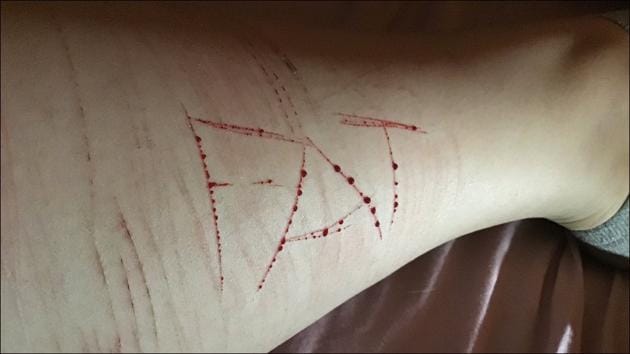Here’s how you can identify adolescents, especially girls, at risk of self-injury
Study reveals how you can predict the first occurrence of non-suicidal self-harm or potentially life-threatening behaviour among adolescents
A new study reports on three key factors - low conscientiousness, high avoidance, and parent’s substance abuse history - found amongst adolescents that could be used to predict the first occurrence of nonsuicidal self-harm, over a three year period.

The study published in the Journal of the American Academy of Child and Adolescent Psychiatry (JAACAP).
“Self-injury is common in adolescents, especially among girls,” stated lead author Monika Waszczuk, PhD, an Assistant Professor at the Department of Psychiatry, Stony Brook University, New York. “This largely hidden condition is characterized by deliberate self-inflicted harm, such as cutting or burning. Many young people who experienced this potentially life-threatening behaviour do not seek treatment, and more than half continue to self-harm into adulthood.
“To help identify adolescent girls who may need support prior to the first occurrence of self-injury, we sought a better understanding of psychological vulnerabilities to this behaviour.”
The findings are based on the Adolescent Development of Emotions and Personality Traits study: an ongoing longitudinal project tracking the health and wellbeing of girls from Long Island, New York. The study began in 2013.
A sample of 462 girls between the ages of 13-15-years old who had never experienced self-harm at the start of the study completed measures of psychological vulnerabilities, including personality traits and psychological symptoms. Mental health was also assessed in the parents of participants. Next, girls were asked about self-injury during interviews conducted multiple times over the three-year follow-up period.
Over the course of the study, 42 girls reported that they started to self-harm. Their baseline psychological vulnerabilities were compared to the remaining 420 girls who never self-injured. Girls who began to self-harm were found to have significantly lower baseline levels of conscientiousness and higher levels of avoidance. They were also twice as likely to have a parent who had a substance abuse problem at some point in life. A psychological profile combining these factors achieved good accuracy in distinguishing girls who initiated self-harm during the following three years in this study from those who did not.
“These results point to two main psychological pathways to adolescent self-harm. The first is disinhibition - an urgency to act and a difficulty regulating one’s behaviour, often when faced with strong negative emotions,” described Molly Gromatsky, PhD, who led the study during her graduate training and is now a Postdoctoral Researcher at the James J. Peters VA Medical Center in the Bronx, New York. “The second pathway is the avoidance of upsetting memories or thoughts, with self-harm used as a maladaptive coping strategy to distract from intense negative feelings. Parental substance abuse might play a role via inherited genetic susceptibility to mental health problems, as well as via environmental transmission of risk.”
Based on past research, traumatic experiences such as violence and abuse, as well as childhood poverty and bullying have significant impacts on nonsuicidal self-harm and other psychological vulnerabilities. This study did not directly assess these factors, however, so determining whether the avoidance trait specifically leads to avoidance of traumatic memories as a step in the development of nonsuicidal self-harm will be an important topic for future research.
“In addition to expanding our understanding of the development of self-harm, the present study derived a personality profile with a good ability to identify adolescent girls who are at risk of initiating self-harm. If replicated in independent samples, this small set of traits would allow for a rapid psychological screening that is feasible to collect in community samples of adolescents (e.g., in schools or primary care, facilitating targeted prevention).” said lead author Roman Kotov, PhD, a professor at the Department of Psychiatry, Stony Brook University, New York.
(This story has been published from a wire agency feed without modifications to the text. Only the headline has been changed.)
Catch your daily dose of Fashion, Health, Festivals, Travel, Relationship, Recipe and all the other Latest Lifestyle News on Hindustan Times Website and APPs.



